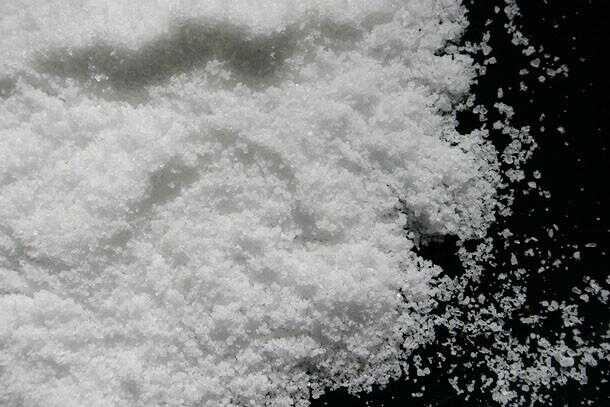
What is it and what is the difference between curing salt 1 It is curing salt 2?
If you are interested in preparing any type of cured meat, such as bacon, coppa, salami, sausage, sausage, pancetta, etc. You are most likely finding recipes that mention ingredients such as curing salt 1 or 2, sodium nitrite, sodium nitrate, instacure#1 and instacure#2.
Firstly, you must understand that the nomenclature and standardization of curing salt 1 It is curing salt 2 is not valid in Brazil, they are merely inaccurate translations of North American standards instacure#1 It is instacure#2. It makes sense there as it is a mandatory standardization of ingredients.
In Brazil there is no nomenclature rule or composition rule, therefore they must be understood with caution, and it is important to always check the quantities of the product purchased and use the quantities indicated by the manufacturer or calculate for correct use. In Brazil, each manufacturer adopts a different amount in their formulations. Curing salt 1 and curing salt 2 with standardized amounts does not exist in Brazil.
In any case, the general understanding is that:
curing salt 1 is a reference to the term instacure#1 and serves to quick cures, like fresh sausages and bacon.
curing salt 2 is a reference to the term instacure#2 and serves to long cures such as salami, copa and raw ham.
How to identify whether the curing salt is quick-curing(1) or long-curing(2)?
Fast curing salt contains sodium nitrite It is table salt(sodium chloride).
Long short salt contains sodium nitrite, sodium nitrate It is table salt(sodium chloride).
Therefore, it will always be for long cures if it has sodium nitrate in the composition. If there is only sodium nitrite and table salt it will be for quick cures.
What is each of them for?
So-called type 1 curing salt It is used for quick cures, such as fresh sausages, cooked ham and cooked sausages, which need immediate action as they will soon be consumed.
So-called type 2 curing salt It is used for long cures, such as salami, coppa and raw ham. Products that take time to prepare and require longer curing.
Sodium nitrate(NaNO³) gradually loses an oxygen molecule during the curing process and starts to have the same composition as sodium nitrite(NaNO²), due to this characteristic it is used in longer curing processes, having a slower and prolonged. Only sodium nitrite acts on the meat, so sodium nitrate acts as it is gradually converted. Nitrate (NO3), by itself, does not have the capacity to react and confer functional effects on meat products or biological/physiological systems. It needs to be converted to nitrite (NO2) and then to nitric oxide (NO). This, in turn, reacts with the iron in the heme pigment and generates the pigment nitrosomyoglobin, a stable pink color, typical of cured products.
To find out more details and how much curing salt to use, read the post Curing salt, what is it and how much to use?
In doubt about how much to use of each additive? Use the Food Additive Calculator
-
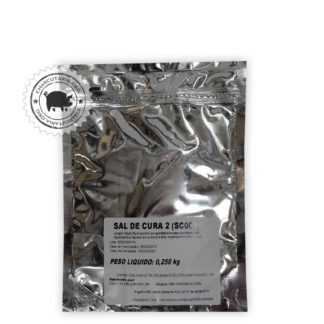 Curing salt 2R$ 8,00
Curing salt 2R$ 8,00 -
 Curing salt 1R$ 8,00
Curing salt 1R$ 8,00 -
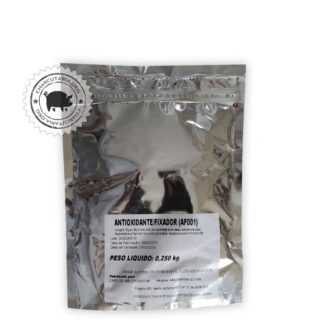 Fixative AntioxidantR$ 23,00
Fixative AntioxidantR$ 23,00 -
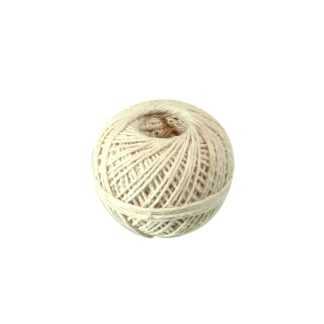 Culinary twineR$ 7,90
Culinary twineR$ 7,90 -
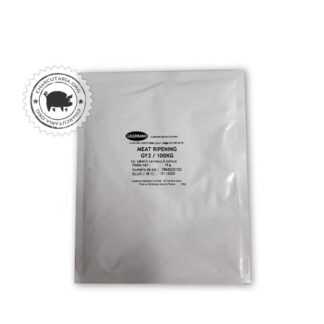 Starter CultureR$ 69,90
Starter CultureR$ 69,90 -
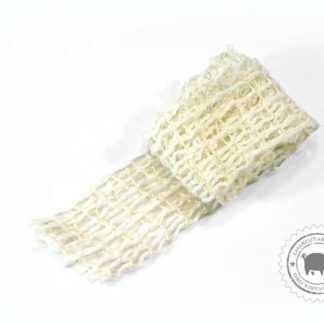 Culinary elastic net 50mmR$ 15,00
Culinary elastic net 50mmR$ 15,00 -
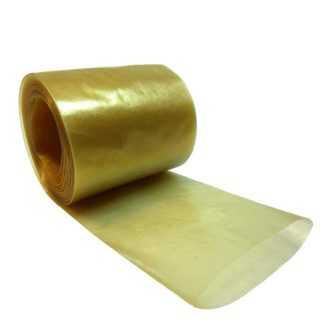 Collagen casing 45mm roll 5 meters salamiR$ 25,00
Collagen casing 45mm roll 5 meters salamiR$ 25,00 -
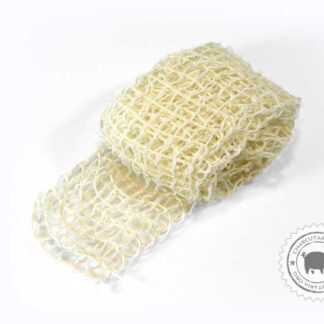 Culinary elastic net 65mmR$ 18,00
Culinary elastic net 65mmR$ 18,00 -
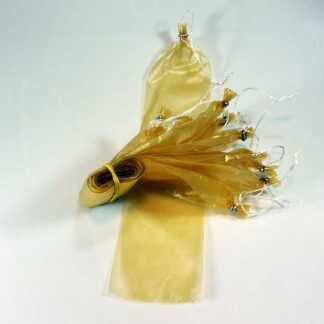 Salami collagen casing 45mm 10 units tiedR$ 22,00
Salami collagen casing 45mm 10 units tiedR$ 22,00 -
 Collagen casing 80mm cup and salamiR$ 29,90
Collagen casing 80mm cup and salamiR$ 29,90 -
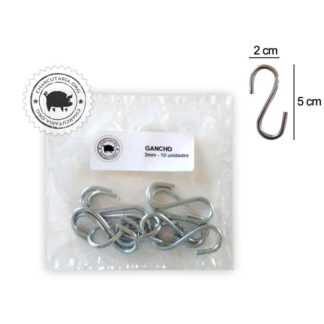 Galvanized HookR$ 12,00
Galvanized HookR$ 12,00 -
 Natural pork casing for sausageR$ 52,00
Natural pork casing for sausageR$ 52,00

-Good afternoon, I'm making salami and I made a mistake I added curing salt 1 when the correct option would be curing salt 2, question:
Do I need to throw it away?
Is there any way to fix it if it's already smoked?
Hi Luiz. You don't need to throw it away, you can continue. Curing salt 1 will protect in the same way as curing salt 2 at the beginning of the process, which is the most critical. Curing Salt 2 has the benefit of long-term protection, but the trickiest phase is at the beginning. Smoking helps even more with protection, so even with curing salt 1, in my opinion it will still be well protected.
Good morning, I want to make the southern salami wetter. And I have some doubts
I didn't want to add preservatives, what can I do instead?
How should I smoke? I have a smoker. How many degrees should I leave and how long?
Good morning
I wanted to make a steakhouse tender. Do you have any recipe suggestions?
what is the reason for using table salt mixed with sodium nitrite for cure 1? I'm setting up a fresh sausage factory and would like to know more about it
Practicality and safety, handling very small amounts of pure nitrite is more difficult and risky, as excessive consumption can kill.
Goodnight,
I want to make sausage and let it drain, I have two questions:
1 – Do I leave the sausage draining in the sun or in the shade? Is there a difference?
2 – How many days can I leave it drying and do I have to use curing salt? As for curing salt, if you are going to use it, which one is correct?
Hi Jefferson. In the shade, in a ventilated place, with protection to prevent insects from landing. It is recommended to use type 1 curing salt and antioxidant, which works together with the curing salt. I also recommend that you add a little wine, 50ml per kg of meat, to help protect it as it will be left at room temperature, which is more susceptible to the proliferation of contamination. Lightly smoking would also be good to protect. Time depends on your taste, I believe that 5 days are enough, which is more or less how long it takes for a colonial salami, one of the softer ones made in the south.
Good morning! I want to make cooked ham and I could only find curing salt 2 (containing salt, nitrite and nitrate). According to the recipe I have, the recommended option would be curing salt 1, without nitrate. Would there be any problem using curing salt 2? Would I have to increase the curing time in the refrigerator before roasting the meat? Thanks!!
Hi Luiz, no problem, you can use type 2 curing salt. Type 1 is ideal for this type of product as it only contains nitrite, which is fast-acting. The nitrate ends up having no function, but other than that the nitrite present in type 2 curing salt will do the job!
Thanks for the answer, Eduardo. In this case, from what I understand, the nitrate won't have time to chemically transform, right? And this residual nitrate that will remain in the ham cannot be harmful?
Hi Luiz, exactly, the nitrate will not have time to be converted, it will be present and will be ingested. But the amount is very small and nitrate is naturally present in broccoli, lettuce, carrots, spinach, celery... the daily intake is higher from vegetables than from processed meats. If you want more details, read this post: https://charcutaria.org/aditivos-alimentares/carnes-processadas-sal-de-cura-nitrito-nitrato-e-cancer/
Hello goodnight,
I'm going to make sausage for home, I was researching on YouTube and there I saw that some artisanal sausage makers use curing salt.
My intention is to make about 2kg of sausage to try. I ask, should I use curing salt, and in this case, there is a minimum amount of salt to use, regardless of the quantity of sausage.
I would also like your opinion on using pork intestines, it is better in terms of flavor.
Thanks.
Att.,
Hi Rosaria. To make it at home and consume it in a short space of time, a week, for example, the use of curing salt is optional. I particularly use it because the curing salt helps with color, flavor and also helps with protection. I use the recommended minimum, which is 2.4g per kg of meat and then rest for at least 12 hours so that the curing salt is converted. But, like I said, it's optional, so you can use it or not, as you wish.
I saw a video saying that type 2 curing salt can only be consumed after 20 days, is that true?
Hi Guilherme. Look at the label of many barbecue sausages from famous slaughterhouses and you will see, in many, the nitrate present in the composition, which is the differential additive of curing salt 2 in relation to curing salt 1. To consume these sausages there is no need for 20 days of manufacture and are products with approved formulation. Nitrate is present naturally, and in large quantities, in several vegetables that we consume daily. The ideal is to use curing salt 1 in products that are consumed quickly, but I don't see any problems when occasionally using curing salt 2, which has nitrite and nitrate in its composition. Read the post Nitrite conversion time in cured meats
Good afternoon, I want to start making homemade sausages. What products should I buy?
Hi Luana, start by testing recipes. To do this you just need: pork tripe, type 1 curing salt It is antioxidant.
Read this post with Tips for making homemade sausage to assist in production.
I would like a kit for salami and coppa
Hello. I do artisanal smoking, always using quick curing and a question came to my mind: for (hot) smoking of pork knuckles, what is the appropriate curing salt? Note: I will leave it curing for seven days in the refrigerator and then take it to the actual smoking process (around 8 hours, at 100 degrees).
Hi Marcos, in this pork knuckle process, use type 1 curing salt.
Thank you very much.
I'm making a pork sausage to be cooked in a bain-marie, I'm using Type 2 Curing Salt, what is the minimum time I should leave it refrigerated before cooking for it to cure?
Hi Newton, I recommend around 12 hours. If the product is very thin, like a steak, you can leave less. If the piece is very thick, like a whole ham, leave it for at least 24 hours.
But isn’t type 2 or “C” curing salt for longer curing? I was using type 1 salt but the product didn't have a nice color so they recommended curing salt 2 and leaving it in the fridge for 7 days so that the product takes on a pinkish color and then I'm in doubt?
For products that are finished cooked, type 1 curing salt is recommended, which has a faster action. Type 2 curing salt I recommend only for products that will undergo maturation, with a process of 15 days or more. If you want to enhance the action of the curing salt, you can use the antioxidant/fixer, which has the exact function of fixing the reddish color more quickly and with greater intensity. Fixative Antioxidant
Ok thank you very much for the answers acting this way you will go far
Please, one question, I followed an Italian recipe to prepare a loin cup, they only use 24 grams of sea salt for approximately 1 kg piece, but I see that here it is recommended to use curing salt 2, so this is it Should I use curing salt and the rest could be sea salt?
Hi Jorge, that's right, use curing salt at the rate of 2.4g per kg of meat and then the rest in sea salt.
If I have sodium nitrite, can I just add the 94% salt, mix and have the #1 curing salt?
If you have pure nitrite and want to mix it with common salt (sodium chloride), yes, you will have curing salt 1.
For a beef brisket pastrami that cures for 14 days, do I use 1 or 2 curing salt?
use curing salt 1
Hello, what is the minimum curing time for 1kg of beef brisket (not a wide cut, it is thin and long) with curing salt 1 in marinade?
The pastrami recipe says 3 to 5 days in the fridge, other people said that the ideal marinade with curing salt 1 is 2 days.
Thank you and congratulations for the website, recipes and support to everyone we have embarked on in this process.
It depends on the thickness of the meat. If the piece is thinner, 2 days is enough, thicker pieces would ideally be left for at least 3 days.
Hi, where I live there is no curing salt 1 only 2 is there any problem using it. Fresh sausage?
No problem, you can use curing salt 2 on the sausages.
Good evening, I'm talking about an Artisan Sausage House here in my city, and I use your channel as a reference (it's the best) in my recipes. And a question arose for me, for the sausage, I use 1# or 2# curing salt, remembering that it is for sale, and must be vacuum-packed and can be sold for more than 15 days.
Hugs and thanks
Hi João, you can use #1 curing salt on sausages. Congratulations on the initiative, success! Fresh sausages from refrigerators generally have a shelf life in the refrigerator (+4°C to +8°C) in closed packaging for 30 days and open packaging for 7 days. But the ideal is a laboratory analysis to determine exactly. Hugs!
Ask me a question, I don't know which curing salt to use to make smoked chicken, I make it for myself without curing salt but people are asking me to do it. And I know that for sale there has to be curing salt.
For smoked chicken, use type 1 curing salt.
Good afternoon.
I bought a pct of curing salt as 1 to make bacon, but I have doubts.
Below are its ingredients.
Salt (85%), preservatives: sodium nitrite (9%) (INS 250) and sodium nitrate (6%) (INS 251).
Would you help me?
Thank you very much in advance.
Hi Bruno, this curing salt is type 2 as it contains nitrate. But you can use it in the production of bacon, without any problems. Follow the instructions on the package or the minimum standard of 2.4g of curing salt per kg of meat.
Can I use curing salt 1 to make pancetta?
Yes, it is not ideal but you can use it without any problems.
Hello !
Thank you for the text, and I inform you that it was the first result on Google for 'curing salt'.
Hugs,
Renato Romano
São B. do Campo/SP
I'M INTERESTED IN MAKING PANCETA AND PEPERONE AT HOME FOR CONSUMPTION; TRY FOR THE FIRST TIME FOLLOWING THE PROPOSED RULES.
ANY FURTHER NOTES TO THIS?
Hi Luiz. Use curing salt 2. Other than that, you can follow the recipes we provide here on the website.
https://charcutaria.org/receitas/peperone-artesanal/
https://charcutaria.org/receitas/pancetta-artesanal/
I have this curing salt and I wanted to know if I could use it to make salami. MEAT CURA LF 8001.
Hi Carlos, power can, but it is not ideal. The ideal would be a curing salt that contains INS 250 and INS 251.
Good afternoon, I have this curing salt and I wanted to know if I can use it to make salami. MEAT CURA LF 8001.
Hi Carlos, power can, but it is not ideal. The ideal would be a curing salt that contains INS 250 and INS 251.
Good morning, one question, how long do nitrite and nitrate act during the curing process in a salami?
For 7-day curing jerky, which curing salt is recommended?
For just 7 days, I believe it is better to use curing salt 1. Take a look at this post which has a graph that shows how long the sodium nitrite from curing salt remains present in different types of meat. https://charcutaria.org/aditivos-alimentares/tempo-de-conversao-do-nitrito-nas-carnes-curadas/
Good afternoon!
How much curing salt should you use for 1kg of dough?
How much curing salt should you use for 1kg of dough?
For curing salt that follows the international standard (instacure#1 and instacure#2) the recommended amount, for both curing salt 1 and curing salt 2, is 2.4g per kg of meat.
I want to smoke sirloin and bacon, where can I find the curing salt? I can't find it in my city.
https://charcutaria.org/categoria-produto/aditivos/sais-de-cura/
Gentlemen, I would like to buy some ingredients, to make salami, sausages, cups, but I am in doubt how to make the ingredients, their measurements in each composition, would you give this support, although the product would be more artisanal, just for friends.
Thanks
Yes, we can help. If you have specific questions, just ask.
If you want, we have many step-by-step recipes for sausages, cups and salami.
Sausage recipes: https://charcutaria.org/categoria/receitas/linguicas/
Salami Recipes: https://charcutaria.org/categoria/receitas/salames/
Cup recipes: https://charcutaria.org/categoria/receitas/copa/